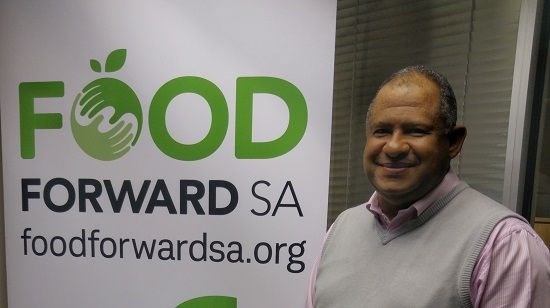
Andy du Plessis, managing director at Food Forward SA, provided those in attendance at the third International Conference on Global Food Security held in Cape Town this week with some of the context within which the organisation operates, how it contributes to hunger alleviation, and how the new virtual platform works.
According to Du Plessis, one third of all food produced in South Africa is eventually dumped in landfills. This statistic is rather shocking considering more than 14-million people go hungry in this country. Tackling this rampant wastefulness in the retail, wholesale and manufacturing sectors, Food Forward SA's vision is a South Africa without hunger.
In terms of food recovery and distribution, the organisation carries out its mission in two ways, explained Du Plessis, one of which is by sourcing, collecting, storing and distributing edible surplus food to roughly 600 non-profit organisations. The second is via its virtual food banking platform, running for six months now, whereby beneficiary organisations are linked to retail stores for daily collection of surplus goods.
"All our food is free and so it makes food banking a really cost effective solution to address the problem of hunger and to start to impact food security," explained Du Plessis. Utilising the food banking model, R0.86 is all it costs Food Forward SA to facilitate the delivery of one meal to one person. During the 2016/2017 financial year, the organisation provided 14.5-million meals to its NPO partners which collectively serve food to 250,000 people daily.
Du Plessis explained that the major reason why the virtual food banking platform was developed was because most warehouses in SA are urban-based, making it difficult to reach its rural beneficiary organisations. "Through the platform, we're able to reach distant areas and definitely some of the rural areas. We also want to deliver more excellent customer service to our beneficiary organisations, improve business performance and efficiency and deliver value for money," he said.
The platform has proven efficient and cost-effective. Two years ago, collection and distribution amounted to over R1m in fuel costs for the organisation. Today, said Du Plessis, it is less than R400,000 using the virtual model.
While the platform can be implemented in various sectors, it is currently used mainly in the retail sector. A vetted Food Forward beneficiary organisation is linked to the closest participating retail store at which it can collect surplus food as well as non-food groceries. Initially, a physical introduction is done with both retailer and beneficiary outlining their specific requirements. When the store has something available for collection, a notification is sent to the beneficiary. When the beneficiary arrives at the store, it logs into the food banking platform to confirm it is there. The system automatically sends it a date-stamped collection authorisation certificate which it then presents to the dispatch manager in order to collect the goods. Once the goods are collected, they are weighed and reported via the platform.
If a beneficiary does not make a collection, it is sent an automatic reminder, and if two hours later the collection slot is still available, it is offered to three other organisations that are in close proximity to the store - the qualifying organisation is determined on a first-come, first-served basis.
According to Du Plessis, the data collected over the last six months is very promising. "In 2015, 90% of our tonnage came from distribution centres, while only 5% came from stores. Today, 47% is coming from distribution centres, and already 36% is coming from the virtual food banking platform. That 36% represents only 6% of the retail stores, so we've got a ways to go and we believe that in the next six months, as we roll out the platform, the virtual food bank tonnage will far exceed the tonnage we receive from retailers, wholesalers, and manufacturing distribution centres."
The next steps for the virtual food banking platform are to scale across the country, add partners from other sectors, as well as further development.
